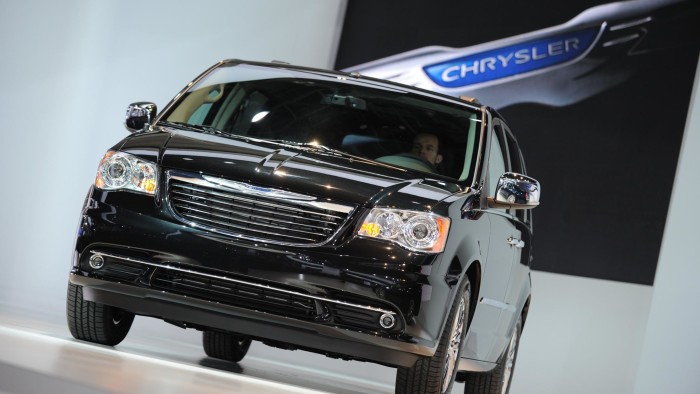The Silver Economy: Carmakers fine tune range for older drivers

Roula Khalaf, Editor of the FT, selects her favourite stories in this weekly newsletter.
Big, chunky, and with a rear like a hearse, Chrysler’s Town & Country minivan will not win many awards for beauty.
But it is the undisputed winner in a far more lucrative competition: appealing to the wallets of America’s elderly.
According to the AAA, America’s motoring organisation, the humble Town & Country scores highest in meeting the demands of older drivers, top of the pile in a growing battleground where technology counts for more than torque, and functionality trumps flashiness.

The baby boomer generation, now entering retirement, is living longer, having more active lives – and crucially – have far more to spend than their parents did.
Dubbed the “Silver Generation” by marketers and retailers, carmakers are joined by other industrial companies, technology groups and property developers in tailoring their product ranges and working practices to cater to this market, as demographics, spending power and wealth shift up the age curve.
People aged over 50 control 70 per cent of the US’s total disposable income, and those aged 55 and over own 56 per cent of the eurozone’s net wealth, according to Lombard Odier, an investment manager that runs a fund specifically investing in companies targeting this segment.
Oxford Economics, the global forecasting group, says industrial companies are discovering unexpected benefits in catering to these older wealthier consumers. In its Longevity report, it cites the example of Oxo, the kitchen tools company, whose products were originally designed for the arthritic hands of older consumers but have proved a hit with all ages.
The car industry too is adapting its model for a generation that tends to spend more on its motors.
“It is fascinating to see the car industry, like others, come round to seeing the huge potential market in the over 65s,” said Alison Sander, director of the Center for Sensing & Mining the Future at The Boston Consulting Group.
People aged 65 and over are expected to account for a more than a quarter of the US car market by 2020, according to Euromonitor, up around 50 per cent from 2010.
One of the most infamous car advertising campaigns was “This Is Not Your Father’s Oldsmobile” by General Motors’ Oldsmobile brand in the 1980s.
The slogan alienated senior buyers and failed to convince the youth. The brand never recovered from the steep decline in sales that followed.
Today’s car brands are actively reversing the premise of that slogan – selling trendy, youthful-looking vehicles to older drivers that choose not to acknowledge their advanced age.
The advert for Hyundai’s i20 model in the UK highlights the car’s advanced safety features, its frugal running efficiency and its longevity – three aspects that seniors rate highly, according to AAA studies. But it features a woman in her mid-thirties going about an active life. The average age of an i20 buyer in the UK is 58 years old.
Cars are being built with lower floor levels, to allow easier access. Powered seats make adjustment simple for those with less dexterity. Doors that open and close automatically ease the strain on weaker limbs.
“Some are moving faster and more effectively than others, but all across the industry companies are tuning in to their needs. They need to make the products relevant,” says Ms Sander. “The key is making the new technology work for them.”
But technology is also making cars more relevant for older people, as more advanced safety features and the race towards self-driving automobiles broaden the appeal of mainstream vehicles to the elderly, who want to live active lives with ageing bodies.
FT series

How industries ranging from technology to entertainment are waking up to the opportunities provided by the world’s rapidly ageing population
Further reading
“The elderly . . . are fitter than ever and living longer, but still are made to give up their licence,” said Andy Palmer, executive vice-president at Nissan. “[Self-driving cars] can extended the time when they can be free and mobile.”
“You can have mobility until you are 85, until you are 95,” said Mr Palmer, who is in charge of Nissan’s product development.
Nissan’s autonomous cars will be out of the laboratory and being driven around by the end of next year.
But even before self-driving cars become mainstream, carmakers are applying innovative new ideas to helping older drivers.
Opel, GM’s European arm, says new features such as blind spot detection, parking assist systems and an in-car emergency button that allows emergency services to talk to the driver in the event of an accident are all major selling points for the elderly market.
“Older people have gained higher shares and the trend will accelerate in the future,” said a spokesperson for the carmaker. “We will include the needs of this group in our future planning.”
Twitter: @HenryJFoy
Comments